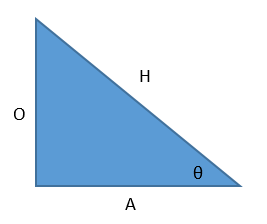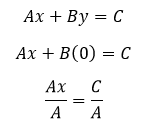Let's talk about logic. For Boolean algebra, it is logic in the form of algebra.
True and false are represented by 1 and 0. The “or” and “and” correspond to
addition and multiplication. In short, it takes logic and its operations and
laws and transforms it to a more familiar language, algebra. I think Boolean
algebra makes logic easier.
In this post, I will go over the symbols, properties, and
laws of Boolean algebra. I will compare it to symbolic logic and regular
algebra. I will briefly discuss how implication (IF-THEN) can be converted to Boolean
algebra. Then I will show using Boolean algebra that four common arguments are
valid arguments.
Symbolic Logic
|
Boolean Algebra
|
True
False
Statement x
X’
X˄Y
X˅Y
X→Y
|
1
0
X
X’ or (1-x)
XY or X∙Y
X+Y
N/A
|
Properties and Laws
of Boolean algebra
1. Idempotent laws
a. X+X=X
b. XX=X
2. Bound laws
a. X+1=1
b. X0=0
3. Absorption laws
a. X+XY=X
b. X(X+Y)=X
4. Involution laws
a. (X’)’=X
5. 0 and 1 laws
a. 0’=1
b. 1’=0
6. De Morgan's laws for Boolean algebra
a. (X+Y)’=X’Y’
b. (XY)’=X’+Y’
The laws and properties for addition and multiplication can
be used as well including commutative, associative, and distributive
properties.
1. Commutative property
a. X+Y=Y+X
b. XY=YX
2. Associative property
a.
(X+Y)+Z=X+(Y+Z)
b.
(XY)Z=X(YZ)
3. Distributive property
a.
X(Y+Z)=XY+XZ
However, unlike regular algebra, you can do addition over
multiplication as well.
X+YZ=(X+Y)(X+Z)
Boolean algebra is the language of logic, so you have both
the distribution of conjunction (and) and disjunction (or).
This also means that X implies Y can be converted to Boolean
algebra. From logic, we know the tautology, implication to disjunction.
(X→Y)↔(X’˅Y)
So X→Y would be X’+Y or (1-X)+Y in Boolean algebra. This will
be useful for the next section.
Four Common Valid
Arguments
If p, then q
P
Thus, q
|
If p, then q
Not q
Thus, not p
|
If p, then q
If q, then r
Thus, if p, then q
|
P or Q
Not P
Thus, Q
|
Valid argument can found using the laws and properties of
Boolean algebra to reach the conclusion. Valid arguments assumes the premises
are true. This also can be used. Remember, an argument is valid when both the
premises and the conclusion are true. With the assumption that the premises are
true, if the conclusion is false or unknown, then the argument is invalid.
First argument
If p, then q
p
|
(1-p)+q using implication to disjunction
p=1 since assumption of true premises
|
(1-p)+q
(1-1)+q
0+q
Thus, q
An argument is a large conditional statement where the “if”
is a line of premises connected by “AND”.
IF p1p2p3…,THEN conclusion.
Another way
((1-p)+q)p
p(1-p)+pq
0+pq
pq
1q since p=1
Thus, q
Second argument
If p, then q
Not q
|
(1-p)+q using implication to disjunction
1-q=1 since assumption of true premises
|
1-q=1
q=0
1-p+q
1-p+0
1-p
Thus, not p.
Third argument
If p, then q
If q, then r
|
(1-p)+q or p’+q using implication to disjunction
(1-q)+r or q’+r using implication to disjunction
|
(p’+q)(q’+r)
p’q’+p’r+qq’+qr
p’q’+p’r+0+qr
p’q’+p’r+qr
p’q’+p’r+p’r+qr
p’(q’+r)+r(p’+q)
p’1+r1
Thus, p’+r
Fourth argument
P or Q
Not P
|
p+q
1-p
|
1-p=1
p=0
p+q
0+q
Thus, q.
For more on logic, check out my youtube channel. If you have any questions or blog ideas, you can e-mail me at jdmathguy@gmail.com
For more on logic, check out my youtube channel. If you have any questions or blog ideas, you can e-mail me at jdmathguy@gmail.com






















































